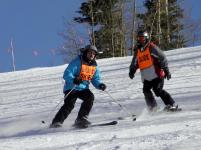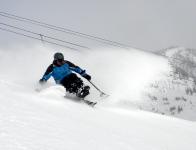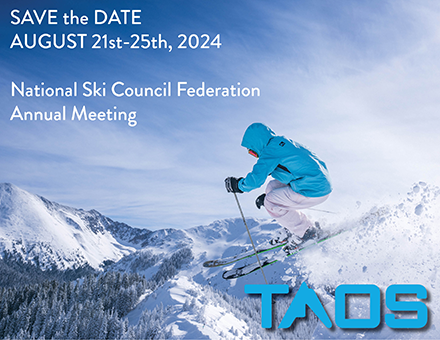

Adaptive skiing uses specialized equipment and/or training to allow people (with disabilities) to experience the benefits of skiing. Skiing and snowboarding provide a sense of freedom that is difficult to duplicate in other sports. Skiing is a fantastic sport for people with physical disabilities or visual impairments in that it helps to develop balance, fitness, confidence, motivation, and social skills. Simply put – Skiing is Skiing!
The primary methods for adaptive skiing and riding are stand-up, sit-down, snowboarding, and ski bike. Stand up skiing includes 2-track, 3-track, and 4-track, while sit skiing includes bi-ski, dual-ski, and monoski.
HISTORY OF ADAPTIVE SKIING
Rooted in accidental injury and war
Started in Europe around WWII – realized importance of participation in sports
Early focus on 3-track (amputees)
Disabled Sports USA formed in 1967 by Vietnam Veterans – Originally, National Amputee Skiers Association
Passing of ADA in 1990
First accepted in Olympics (Paralympics) in 1992
Development of Technology
· Pre-1970 – Outriggers
· 1974 – Ski Bra is discovered at a ski show. Helps keep tips from crossing.
· 1975 – Toe-Spreader – Bar that fits under the bindings and across the skis
· 1976 – Slant Board – inserted under bindings to give forward or backward slant
· 1978 – First sit ski – ‘Plunk’ cross country sled for paraplegics
· 1980 – Arroya Sled for alpine skiing became part of the national games (like a toboggan)
· 1984 – Mono-ski developed
· 1986 – Bi-ski developed
Adaptive Adventures, https://adaptiveadventures.org/program/what-adaptive-skiing



